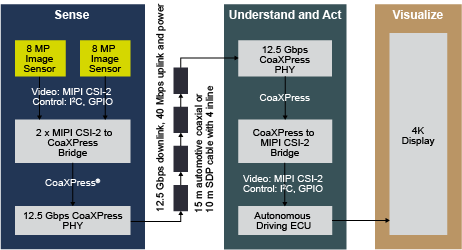Offering a significant improvement in speed over CoaXPress v 1.1, CoaXPress 2.0 extends the data transfer rate up to 12.5 Gbps for cables lengths of up to 40m, and up to 40 Mbps for bidirectional communications. It supports higher frame rates or higher camera resolutions for developing even higher-performance video imaging systems. Key advantages of this new version of the standard include:
- In addition to the CoaXPress 1.1 data rates of up to 6.25 Gbps, it supports 10 Gbps (CXP-10) and 12.5 Gbps (CXP-12) data rates and doubles the cable bandwidth so you can use fewer and more flexible cables and fewer frame grabber cards
- A single camera can send data to more than one frame grabber, which can be located in different PCs
- The doubled uplink speed of 40 Mbps enables trigger rates over 500 kHz without requiring a dedicated high-speed uplink cable
- It includes enhanced support for event packets and 3-D data formats in the industry-standard GenICam™ programming interface
- Support for the compact and robust Micro BNC connector is now available
- It offers easy migration and backwards compatibility with CoaXPress 1.1 to preserve your investment in previous systems and products



